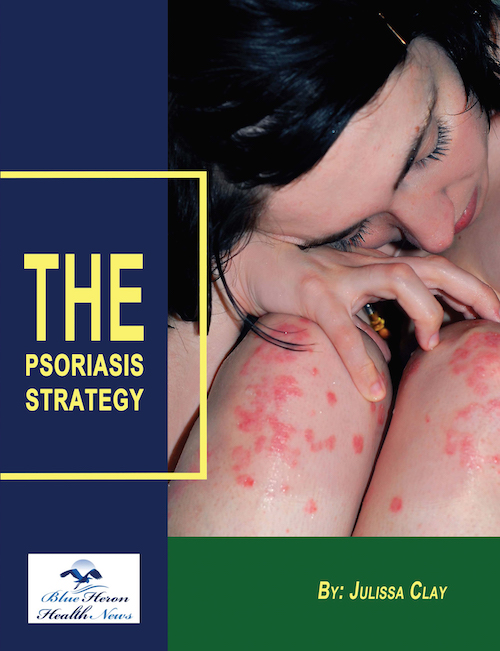
The Psoriasis Strategy™ By Julissa Clay to treat your skin problem of psoriasis The Psoriasis Strategy can be the best option for you as it can help you in curing your skin problem without worsening or harming your skin condition. All the tips provided in this eBook can help you in treating your psoriasis permanently, regardless of the period you are suffering from it.
What are the different types of psoriasis?
There are several different types of psoriasis, each with distinct characteristics. Here’s an overview of the main types of psoriasis:
1. Plaque Psoriasis (Psoriasis Vulgaris)
- Most Common Type: This is the most common form of psoriasis, affecting approximately 80-90% of people with the condition.
- Appearance: It is characterized by raised, red patches of skin covered with silvery-white scales. These patches, known as plaques, can be itchy, sore, and sometimes crack and bleed.
- Common Locations: Plaque psoriasis typically appears on the scalp, elbows, knees, and lower back, but it can occur anywhere on the body.
2. Guttate Psoriasis
- Small, Drop-Like Lesions: Guttate psoriasis appears as small, red, drop-shaped spots on the skin. The lesions are usually smaller and less thick than those of plaque psoriasis.
- Common Triggers: This type of psoriasis often appears suddenly and is commonly triggered by infections, particularly strep throat.
- Common in Children and Young Adults: Guttate psoriasis is more common in younger individuals and tends to affect the torso, arms, and legs.
3. Inverse Psoriasis
- Smooth, Red Patches: Inverse psoriasis is characterized by bright red, inflamed patches of skin that are usually smooth and lack the typical scales seen in other forms of psoriasis.
- Location in Skin Folds: This type typically occurs in skin folds, such as under the breasts, in the armpits, around the groin, and under the buttocks.
- Worsened by Moisture and Friction: Because inverse psoriasis occurs in areas prone to friction and moisture, it can be easily irritated and is often aggravated by sweating and rubbing.
4. Pustular Psoriasis
- Pus-Filled Blisters: Pustular psoriasis is characterized by white pustules (blisters filled with non-infectious pus) surrounded by red, inflamed skin.
- Localized or Generalized: It can be localized to certain areas, such as the hands and feet (palmoplantar pustulosis), or more widespread, covering larger areas of the body.
- Rapid Onset: Pustular psoriasis can develop rapidly and may be accompanied by fever, chills, and fatigue in more severe cases.
5. Erythrodermic Psoriasis
- Severe, Widespread Redness: Erythrodermic psoriasis is a rare and severe form of the disease, causing widespread, fiery redness and scaling across large portions of the body.
- Serious Condition: This type of psoriasis can cause severe itching, pain, and shedding of the skin in large sheets. It can also lead to complications such as dehydration, infection, and heart failure.
- Medical Emergency: Erythrodermic psoriasis requires immediate medical attention and may require hospitalization.
6. Nail Psoriasis
- Affects Fingernails and Toenails: Nail psoriasis causes changes in the appearance and structure of the nails. It may cause pitting (small depressions in the nails), thickening, discoloration, and separation of the nail from the nail bed (onycholysis).
- Linked to Psoriatic Arthritis: Nail psoriasis is often associated with psoriatic arthritis, which affects the joints and can cause pain and stiffness.
7. Psoriatic Arthritis
- Joint Involvement: Psoriatic arthritis is a type of arthritis that affects some people with psoriasis. It causes joint pain, stiffness, and swelling, and can lead to permanent joint damage if left untreated.
- Symptoms: In addition to skin symptoms, people with psoriatic arthritis may experience fatigue, nail changes, and swelling of the fingers and toes (dactylitis).
Conclusion:
Psoriasis manifests in several different forms, ranging from the common plaque psoriasis to more rare and severe types like erythrodermic psoriasis and pustular psoriasis. Each type affects the skin differently and may require specific treatments tailored to its severity and presentation.

The Psoriasis Strategy™ By Julissa Clay to treat your skin problem of psoriasis The Psoriasis Strategy can be the best option for you as it can help you in curing your skin problem without worsening or harming your skin condition. All the tips provided in this eBook can help you in treating your psoriasis permanently, regardless of the period you are suffering from it.